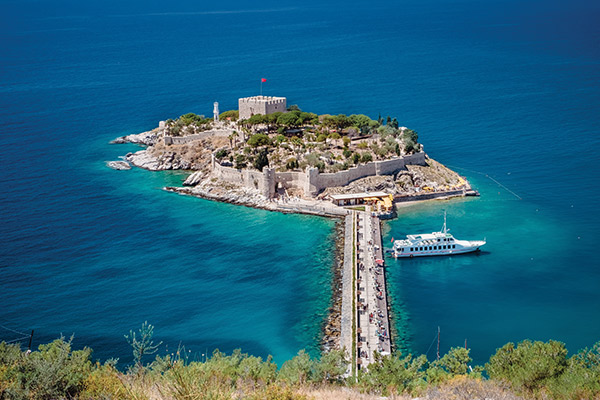Kuşadası Castle
Kusadası has an impressively long history that stretches back to 3,000 BC when Lelegians and Carians established a colony here to take advantage of the mild climate and fertile plains to grow olives, grapes, figs and more. The area became home to Ions, Aeolians, Lycians and Persians in subsequent years and was also one of Alexander the Great’s major Hellenistic cities. Becoming a significant part of the Silk Road and eventually a prime trading port for the Ottomans, the city was taken over by Venetian and Genoese colonisers in the sixteenth century and contains fascinating traces from all of these eras.
The most famous sight is Güvercin Adası, more commonly referred to as Pigeon Island or Bird Island, from which the city takes its name (Kusadası literally means ‘bird island’). Located just south of the main harbour, the island got its name because of the large number of birds that arrived here during seasonal migrations and hosts a majestic fortress that was originally built by the Venetians and Genoese as a defensive look-out and rebuilt into its current incarnation by the Ottoman Turks in the fifteenth century. Connected to the mainland by a narrow causeway, the island is now a popular spot for a circular stroll complete with a landscaped walkway and parks arranged inside the castle interior, a small museum, and photogenic views of the city from the ramparts and battlements. It’s also possible to swim at the castle’s small but pretty beaches.
Another striking historic icon of the city is the Caravanserai. Situated close to Bird Island and the harbour, this imposing but handsome stone structure was Built in 1618 and commissioned by Ottoman statesman Öküz Mehmed Pasha. It was designed as a wayside inn for travellers and merchants and later became a customs house, fortified with battlements to protect the goods that were stored inside. As well as admiring the exterior, it’s work popping into the arched gate to admire the large open courtyard and arched colonnades, which host occasional handicraft stalls, art exhibitions, cultural events and music shows.
